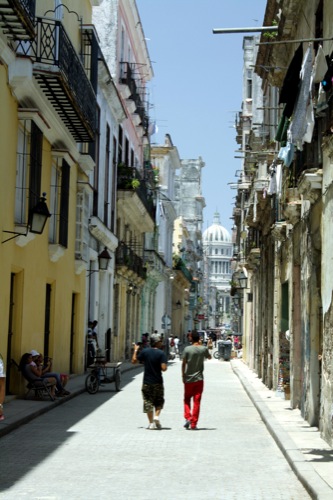
It’s no secret that the Cuban Revolution of the 1950s and subsequent communist government of the country have created a strained relationship between Cuba and the United States. And although Americans count on our independent media and thorough scholarship to give us an accurate account of the revolution and its impact on life in Cuba, there is an alternate version of this history that we haven’t heard — the official story told by the Cuban government.
Communism and conflict are not central themes during a People-to-People tour in Cuba, but it’s hard to escape the impact that the revolution has had on the country. Propaganda is everywhere. As you travel Cuba’s highways, the only billboards you’ll see are propaganda messages promoted by the communist government.
Throughout the course of a tour, groups have several opportunities to visit places that present the official Cuban version of history. In Havana, Revolution Plaza has a large monument dedicated to the fighters who joined Fidel Castro in overthrowing the previous government. In the center of the city, the Revolution Museum displays documents, weapons and vehicles used in the revolution. The museum is housed in the former presidential palace, which was the home of the country’s leaders from the 1920s through the 1950s.
In Santa Clara, groups can stop to visit the Che Guevara Memorial, a museum and monument that tells the story of one of Cuba’s most beloved revolutionary leaders. Guevara is entombed in a mausoleum inside the memorial.
In each of these places, the version of Cuban history presented is glowing, effusive and decidedly one-sided. It’s up to each visitor to parse the truth from propaganda.









